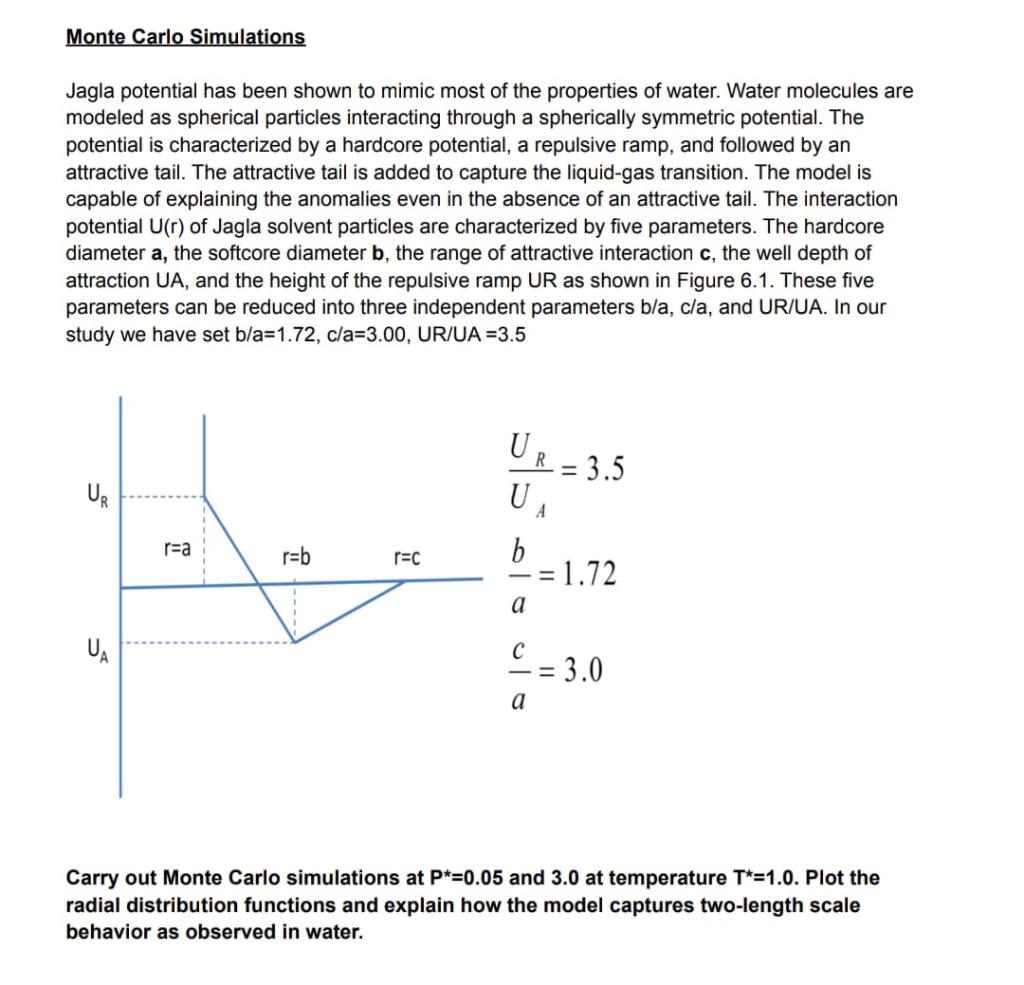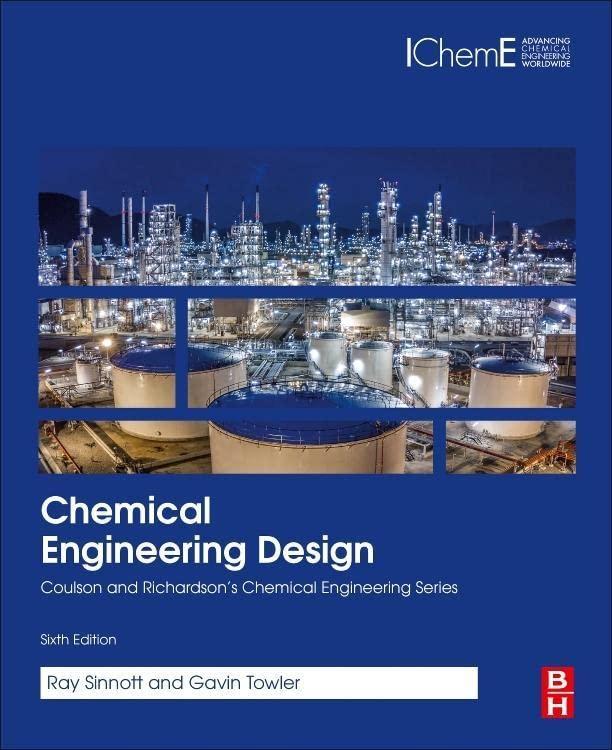
Monte Carlo Simulations Jagla potential has been shown to mimic most of the properties of water. Water molecules are modeled as spherical particles interacting through a spherically symmetric potential. The potential is characterized by a hardcore potential, a repulsive ramp, and followed by an attractive tail. The attractive tail is added to capture the liquid-gas transition. The model is capable of explaining the anomalies even in the absence of an attractive tail. The interaction potential U(r) of Jagla solvent particles are characterized by five parameters. The hardcore diameter a, the softcore diameter b, the range of attractive interaction c, the well depth of attraction UA, and the height of the repulsive ramp UR as shown in Figure 6.1. These five parameters can be reduced into three independent parameters b/a, c/a, and UR/UA. In our study we have set b/a=1.72,c/a=3.00, UR/UA =3.5 Carry out Monte Carlo simulations at P=0.05 and 3.0 at temperature T=1.0. Plot the radial distribution functions and explain how the model captures two-length scale behavior as observed in water. Monte Carlo Simulations Jagla potential has been shown to mimic most of the properties of water. Water molecules are modeled as spherical particles interacting through a spherically symmetric potential. The potential is characterized by a hardcore potential, a repulsive ramp, and followed by an attractive tail. The attractive tail is added to capture the liquid-gas transition. The model is capable of explaining the anomalies even in the absence of an attractive tail. The interaction potential U(r) of Jagla solvent particles are characterized by five parameters. The hardcore diameter a, the softcore diameter b, the range of attractive interaction c, the well depth of attraction UA, and the height of the repulsive ramp UR as shown in Figure 6.1. These five parameters can be reduced into three independent parameters b/a, c/a, and UR/UA. In our study we have set b/a=1.72,c/a=3.00, UR/UA =3.5 Carry out Monte Carlo simulations at P=0.05 and 3.0 at temperature T=1.0. Plot the radial distribution functions and explain how the model captures two-length scale behavior as observed in water







